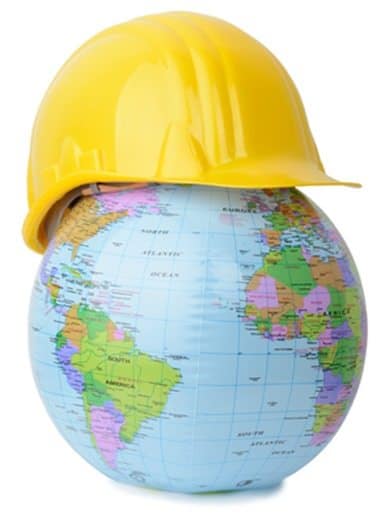The Safety Worldview

This philosophy of DON’T is rarely articulated just as the use of the word ‘culture’ is rarely defined. Instead, deficit thinking is accepted as ‘normal’ for Safety, fear is the way we ‘do things round here’. This is what we get from a curriculum in Safety that is preoccupied with objects and the mechanics of control (https://safetyrisk.net/isnt-it-time-we-reformed-the-whs-curriculum/ ). When you create a curriculum based on don’ts, no wonder the outcome is an industry of graduates perceived as ‘killjoys’, ‘nerds’ and ‘crusaders’. Then pour some petrol on the graduate embers with CEOs in love with numerics, behaviours and mechanics and we get what we have now.
In the last SEEK training in Brisbane recently (https://safetyrisk.net/essentials-in-investigations/) one of the participants (from a Tier 1 organisation) told a story about what she encounters on site when she explains who she is. She walks on site and someone might say, ‘who are you?’ she replies ‘I am the safety person’. She stated that invariably the response is, ‘I hate you’. This is what the deficit worldview creates. This is what the current WHS curriculum creates, and no one is talking about curriculum reform. Indeed, when I presented this at an SIA conference all I received was defensiveness and denial. Even when one reads the SIA strategic plan, there is absolutely no discussion of curriculum reform (https://sia.org.au/downloads/strategic_planning_2016/SIA_Strategic_Plan_2016_2021_final.pdf ). Safety loves the worldview just as it is. The word ‘curriculum’ is not even mentioned at all in the SIA Strategic Plan, fantastic.
A worldview is a philosophy, the foundational methodology hidden as drivers behind the method of what is done. One looks at what Safety does and just has to ask the question, ‘what are the driving values of this action’. Typically one ends up with an answer of deficit ‘don’ts’. Well done to the Safety Differently group (http://www.safetydifferently.com/) that tackle this worldview head on. Similarly in the work I do, I don’t even mention the word ‘safety’ in my work. It’s like someone has thought of all the things that would toxify an approach to life and then decided to go ahead and do it. No wonder people say, ‘I am just not into safety anymore’ (https://safetyrisk.net/just-not-that-into-safety-anymore/ ). What a strange worldview that venerates the love of objects over subjects, hazards over risk and, fault/blame over learning.
Now, this critique of Safety is not a rejection of being safe nor an advocation for unrestrained risk but rather, an analysis of what Safety has become and articulates why people find WHS irrelevant. Safety in its short evolution in only 30 years has created the opposite of what it wants. This has come about and is sustained by an unprofessional WHS curriculum, a dumb down dynamic and a deficit worldview that people reject because it is life-denying, learning-denying and soul-destroying.
I recently heard a Conference presentation that has been put out in the sector by a peak body, as an excellent articulation of ‘cultural performance’ in safety. Same old stuff, no definition that is even close to what culture is about (https://vimeo.com/118458068 ), simplistic understanding of human judgment and decision making and, same old rhetoric of, ‘the only thing that stops people from achieving zero harm is belief’. Oh dear, ‘safety I hate you’ sings its song once again. If only we had enough faith we would be healed.
Of course, there is much that can be done that reframes this Safety worldview but it requires a conversion in philosophy rather than tinkering about the edges. There is a whole body of knowledge (https://safetyrisk.net/social-psychology-of-risk-body-of-knowledge-2/) that stands outside the Safety Worldview that is simply not a part of the WHS philosophy. There is much ‘sunk cost’ as I discovered at the SIA conference in the Safety Worldview and many have invested much in that Worldview. There is so much invested in the power and control of that Worldview and it takes a great deal to give it up for a worldview of learning, discovery, relational ethics and humanizing the workplace. There is much to unlearn, most of it contained in the average WHS Diploma and the WHS systems that decorate the shelves of safety offices. There is much that is hidden behind the ‘cosmetics of safety’ (eg. TRIFR https://safetyrisk.net/courage-to-challenge-the-great-trifr-and-lti-delusion/, https://safetyrisk.net/safety-curves-and-pyramids/ ) and the ‘tick and flick’ delusion that the Safety Worldview venerates.
If you are interested in beginning the journey in the Social Psychology of Risk, in entertaining a new way of stepping back from the Safety Worldview then maybe you might like to come to the Introduction to the Social Psychology of Risk Workshop on 8,9,10 February 2017 in Sydney (http://cllr.com.au/product/an-introduction-to-the-social-psychology-of-risk-unit-1/ ).


Do you have any thoughts? Please share them below